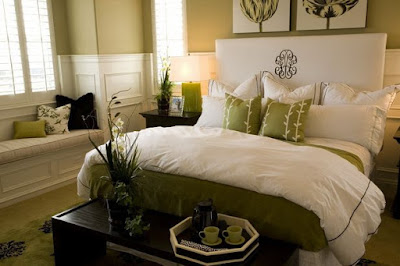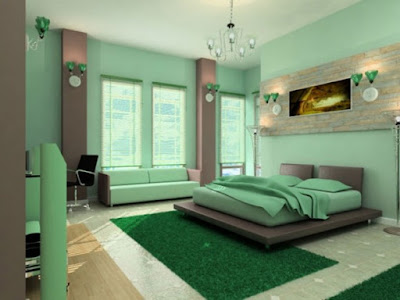Color Scheme Ideas for an Adjoining Living Room & Kitchen
 When choosing a color scheme for adjoining rooms, aim to create a sense of flow throughout the interior of your home. Decorating each room in the home with a different color not only impedes the sense of flow, but also makes the home feel smaller, as each change in color creates a boundary between each room. By using either the same or complementary colors and hues, you create a feeling of openness and space.
When choosing a color scheme for adjoining rooms, aim to create a sense of flow throughout the interior of your home. Decorating each room in the home with a different color not only impedes the sense of flow, but also makes the home feel smaller, as each change in color creates a boundary between each room. By using either the same or complementary colors and hues, you create a feeling of openness and space.Neutrals
Neutral colors are suitable for every room in the home, and a neutral background is ideal for adding splashes of color to make each room a little different from its neighbor. Decide on one main neutral shade, such as light mocha or warm beige, for the walls in both rooms. If you want to split the living room walls into lower and upper sections, use the slightly darker shade on the lower half of the walls for the kitchen. Also, select an accent color for skirting boards, woodwork, and cupboards, for example, white for a clean and fresh vibe. Add splashes of a complementary color, such as light green cushions in the living room and darker green accessories in the kitchen.
One Color
Using the same color in adjoining rooms ensures there is no clash between the rooms if you wish to leave doors open or remove them entirely. The color you decide upon depends on personal preference and what sort of atmosphere you wish to create. Warm, visually advancing colors, such as reds and oranges, make a room feel cozy and comfortable, but they are not suitable for a small room as they will simply make it feel smaller. Cool, visually receding colors, such as light shades of blue and green, create a light, airy atmosphere. However, in a large room with lots of natural light, cool colors can make a large space feel cold.
 Complementary Colors
Complementary ColorsIf you have chosen the color for the living room, but don't want to use the same color in the kitchen, a color wheel will help you determine which colors complement each other. For example, if you want to use purple in the living room, a quick look at a color wheel tells you that yellow is the complementary color for purple. For a slightly more similar appearance between the two rooms, use different shades of the same color. One example is to use a dark shade of purple in the living room, lilac in the kitchen, and rich cream as an accent color in both rooms to maintain a cohesive look.
Different Finishes
Different finishes, such as faux paint effects, allow you to use the exact same color in both rooms while still maintaining a sense of individuality for each. Use a paint effect, such as ragging or sponging, in the kitchen and then paint the living room using the same color but without the paint effect. Alternatively, split the living room walls into upper and lower sections and continue the paint effect from the kitchen on the lower half of the living room walls, and keep the top half a solid color.










Comments
Post a Comment